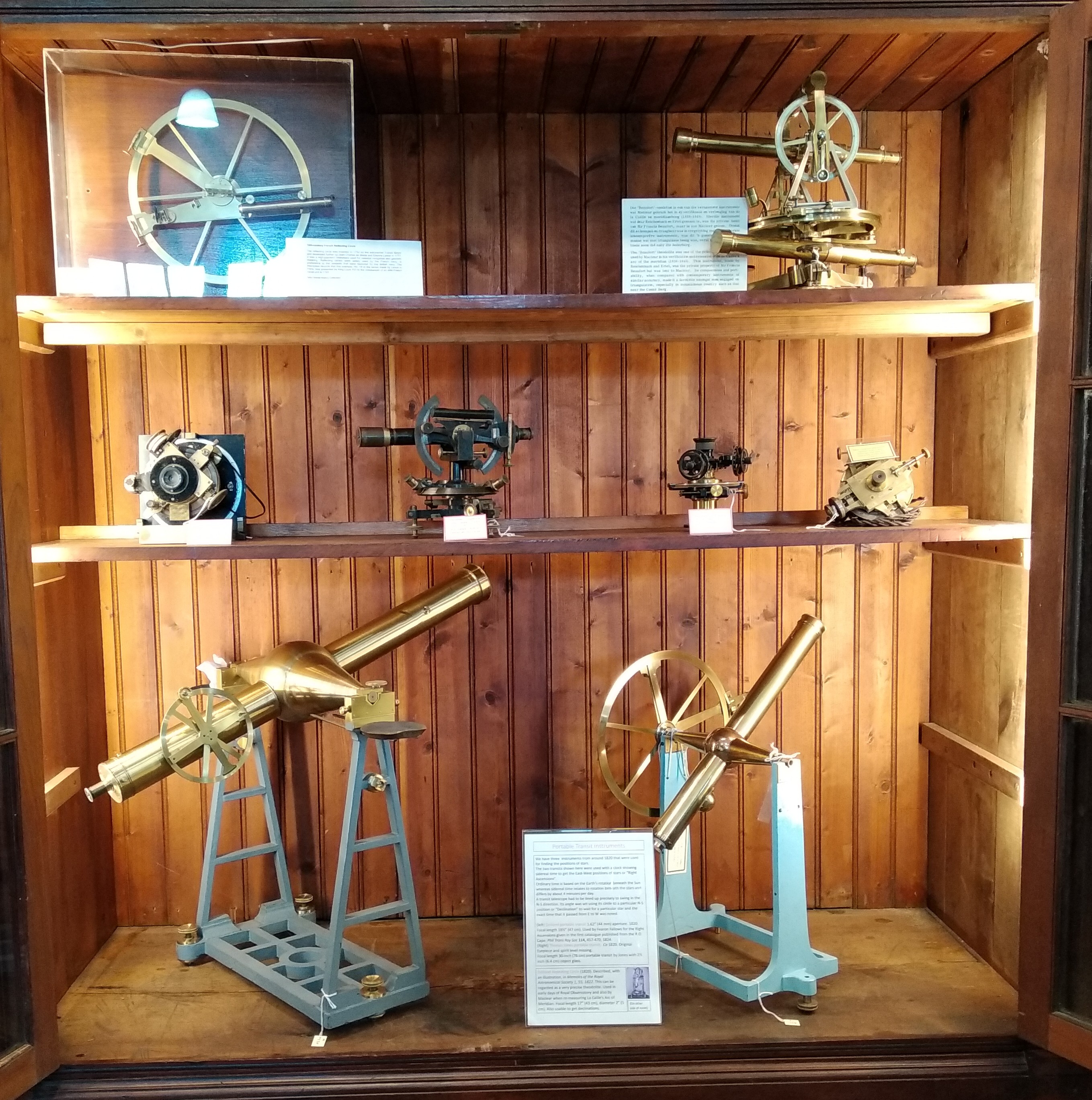|
The measurement of positions on the sky (astrometry) and on the Earth (geodesy) was one of the main tasks of the Cape Observatory. Several of the instruments displayed here are among the finest specimens of the instrument makers' art. Other larger instruments were permanently mounted in special enclosures (the Gill Transit Circle elsewhere in the grounds being the last one that still exists). They were capable of measuring to better than one second of arc or one part in 1,296,000 of a complete circle. At the bottom of this display are two "portable" transit instruments. These are used for measuring the precise moment at which a star or other object passes from East to West on the sky due to the rotation of the Earth. They had to be set up to swing precisely North-South. The observer set the instrument to the correct angle and waited for the star to "transit" and noted the exact sidereal (star) time. A sidereal clock was always kept nearby. [Whereas ordinary or Solar time is measured according to the rotation of the Earth beneath the Sun, Sidereal time is measured according to its rotation beneath the stars. Sidereal time differs from solar time by about 4 minutes per day thanks to the revolution of the Earth around the Sun.] The two instruments on the top shelf and the theodolite on the middle shelf were used for geodetic surveying of the Earth's surface which was one of the tasks of the Observatory in its early days. The top left instrument is the oldest item in the collection and is a "repeating circle" dated 1785 by Borda, Paris M134. The one on the top right is known as the "Beaufort Theodolite" M133 of about 1820. Many of the early survey instruments originally owned by observatory are now at the Trig. Survey offices in Mowbray, Cape Town because this became a separate institution in the early 20th cantury. Two other instruments are special measuring eyepieces that attached to telescopes for measuring the separations of double stars. This was an essential part of astrophysics as it is only by studying the orbits of binaries that star masses can be found. |
